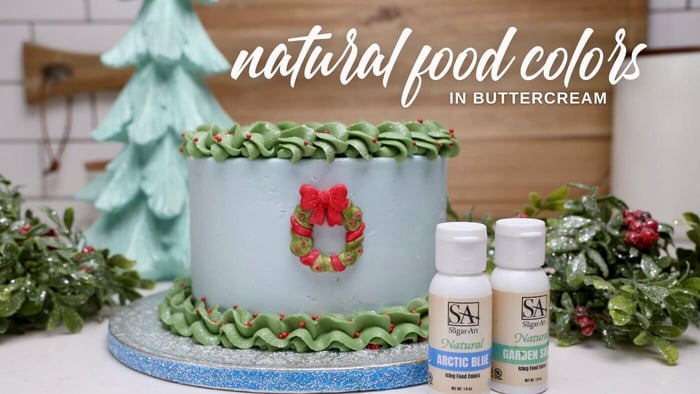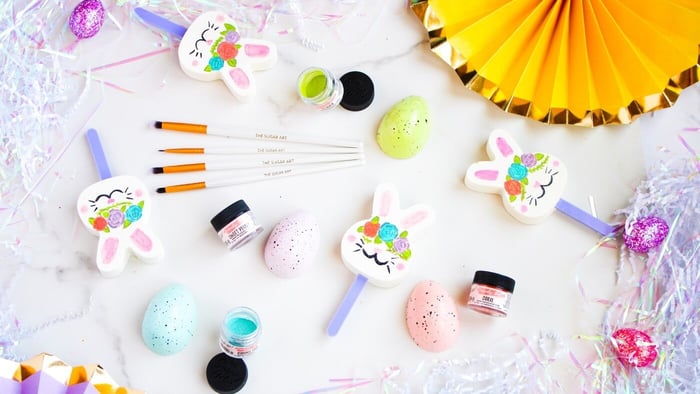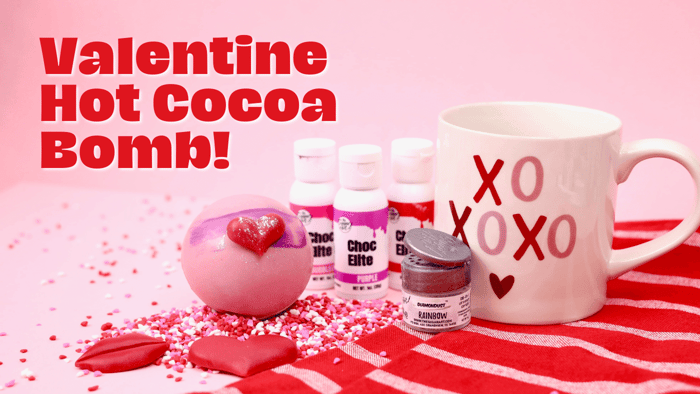The Colorful Magic of Nature: Why Natural Pigments Shine in Buttercream
In my 25+ year career of developing the strongest colors in this sugar art industry, and leading innovator, plus - a professional cake decorator - I have strived to WOW every customer I have had the honor of serving. The same effort applies to my new natural food colors. With this new natural line, I have discovered that Natural Food Colors in Buttercream is the perfect canvas for them to really show off.
Let’s break down why they work so beautifully and why I formulated our natural line specifically with buttercream users in mind.
Buttercream: The Perfect Canvas
Whether you’re team American, Swiss meringue, French, Italian, or high-ratio bakery style, all buttercreams share one key truth:
Buttercream is an emulsification.
Magic, science, and sugar - all whipped together.
You’re combining:
Fat
Liquid
Sugar
Sometimes egg components
…into a perfectly suspended, silky structure. And bakers know—if you're off by even a little, that smooth dream can turn into a curdled, separated mess.
This delicate balance is exactly why pigment choice matters.
Not every colorant wants to play nicely with a fat-based frosting—but nature just so happens to have the perfect solution. Or so I've learned in my natural journey. Natural food colors in buttercream is surprisingly incredible and I'm here to provide all the science.
Synthetic vs. Natural: What Actually Happens in Buttercream
Synthetic Colors
Synthetic colors usually come in two formats:
Water-soluble
Fat-dispersible
Here’s the kicker — the strongest synthetic option is water-soluble, but buttercream is a fat-based system, which means those pigments struggle to fully incorporate without extra work.
That’s why:
Gel colors can leave streaks.
I overcome this with my gel formulas, by making them the strongest formulas on the market - so cake decorators don't have to use so much of my gels. This is why so many cake decorators really love our water-based gel colors.
The color can take longer to develop.
You may need stabilizers, gums, heat, or high liquid ratios.
And while fat-dispersible synthetics exist, they’re only about 30–40% as strong as their water-based counterparts… so you lose intensity and control.
Bakers often resort to tricks like heating a small portion of icing to intensify the pigment (which works very well!)—but there’s a simpler, more elegant pathway.
Natural Food Colors In Buttercream
Our natural pigments come directly from isolated plant compounds—botanicals, seeds, fruits, and flowers. Because these pigments are derived from organic matter, their natural state is already a concentrated juice, not a crystal that has to be dissolved in water first.
That means:
✔ They don’t rely on high water content to activate
✔ They naturally contain glycerin-like compounds
✔ They mimic sugar and integrate seamlessly into fat
✔ They don’t disrupt your emulsion
✔ They blend instantly and stay smooth
This is why so many bakers testing our naturals tell us:
“This is the easiest color I've EVER mixed into buttercream.”
And it’s true—because the pigments are already fully activated, they don’t need time to bloom inside the icing. They blend evenly from the moment you stir them in. Natural food colors in buttercream is honestly, amazing!
Bonus: Natural Colors Love Drying Time
Many natural tones deepen beautifully as buttercream sets, giving you:
richer depth
softer gradients
more elegant, nature-inspired hues
It’s one of the most magical parts of working with botanicals—nature loves to evolve.
The Science Behind Botanical Pigments in Buttercream
Natural colors don’t just look different—they behave differently on a molecular level. Each botanical pigment carries its own “personality,” influenced by factors like pH, light sensitivity, and the structure of the plant compound itself. When these pigments meet buttercream, the fat in the icing acts almost like a cozy blanket, gently surrounding each particle and helping it disperse evenly.
This is one of the reasons natural pigments create such soft, velvety tones without the sharpness you sometimes get from synthetic gels.
Buttercream’s fat structure also slows down oxidation, giving many natural pigments a longer window of beauty compared to when they’re used in water-based systems - like royal icing.
This is why botanicals feel so at home in buttercream—there’s a built-in harmony between the two.
How Natural Colors Elevate the Cake Decorator's Creative Process
One of the biggest advantages of coloring buttercream with natural pigments is the predictability they offer in fat-based mediums. Because these pigments blend so effortlessly, bakers gain a new level of control. You can micro-adjust tones without fear of over-saturation, and you can layer color gradually to create depth.
A Cleaner Label Without Sacrificing Performance
For many bakers, the move to natural coloring isn’t just about appearance—it’s about value. Customers want ingredients they recognize and trust. Using natural pigments allows bakers to offer a cleaner label without compromising texture or stability. It’s the rare moment where science, art, and consumer demand all align.
And at The Sugar Art, that alignment is exactly the standard we create for.
In Summation, Nature’s Palette Is Pure Magic For Buttercream Users
When we choose natural pigments for buttercream, we’re not just coloring icing.
We’re elevating confections with pigments that behave beautifully inside emulsified systems—and honoring the botanicals they came from. I really believe in natural food colors in buttercream, and I know if cake decorators will join me - they will too.
Natural colors offer:
Superior stability in buttercream
Effortless blending
Smoother textures
A cleaner ingredient panel
A visually stunning finish that feels organic and intentional
By embracing the colorful magic of nature, we transform buttercream from a simple icing into an artistic medium—one that looks every bit as extraordinary as it tastes.
And that’s the heart of my efforts and enter business:
Beautiful color, brilliant performance, and the perfect marriage of science + sugar.
In service,
Edward Frys
Owner of The Sugar Art / Professional Cake Decorator
Read Our Introductory Natural Blog Here
PS: About The Cake In this Post.
I used a modified Swiss Meringue to color two tones, Arctic Blue and Garden Sage. The Arctic Blue is spirulina-based and one of the strongest natural colors I offer - however, the Garden Sage combination of several natural botanicals, giving a very subtle - but classic green. You will need more drops to achieve a good tone with Garden Sage, the same is true in Royal Icing. Again, natural food colors in buttercream is so far my favorite medium for natural food colors in general!




